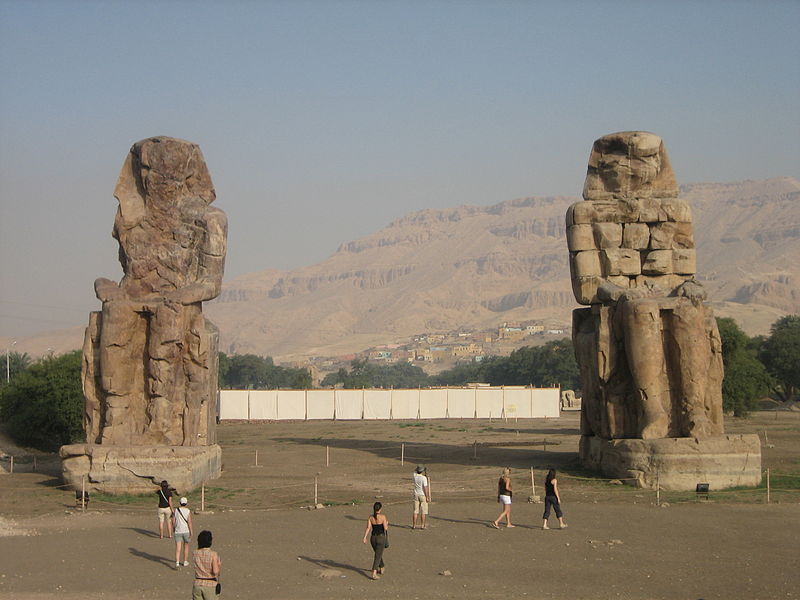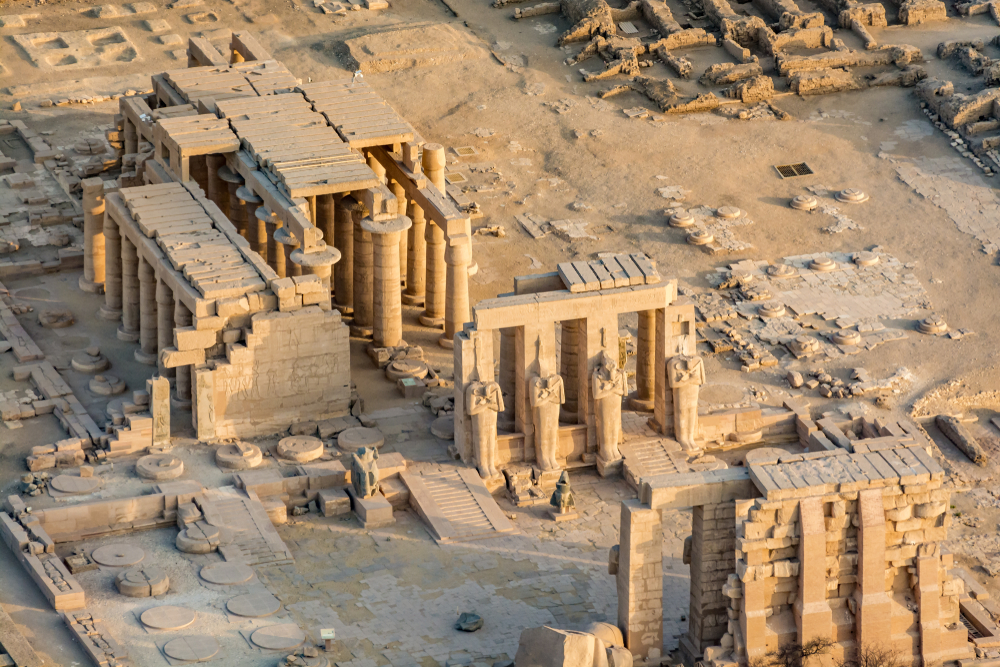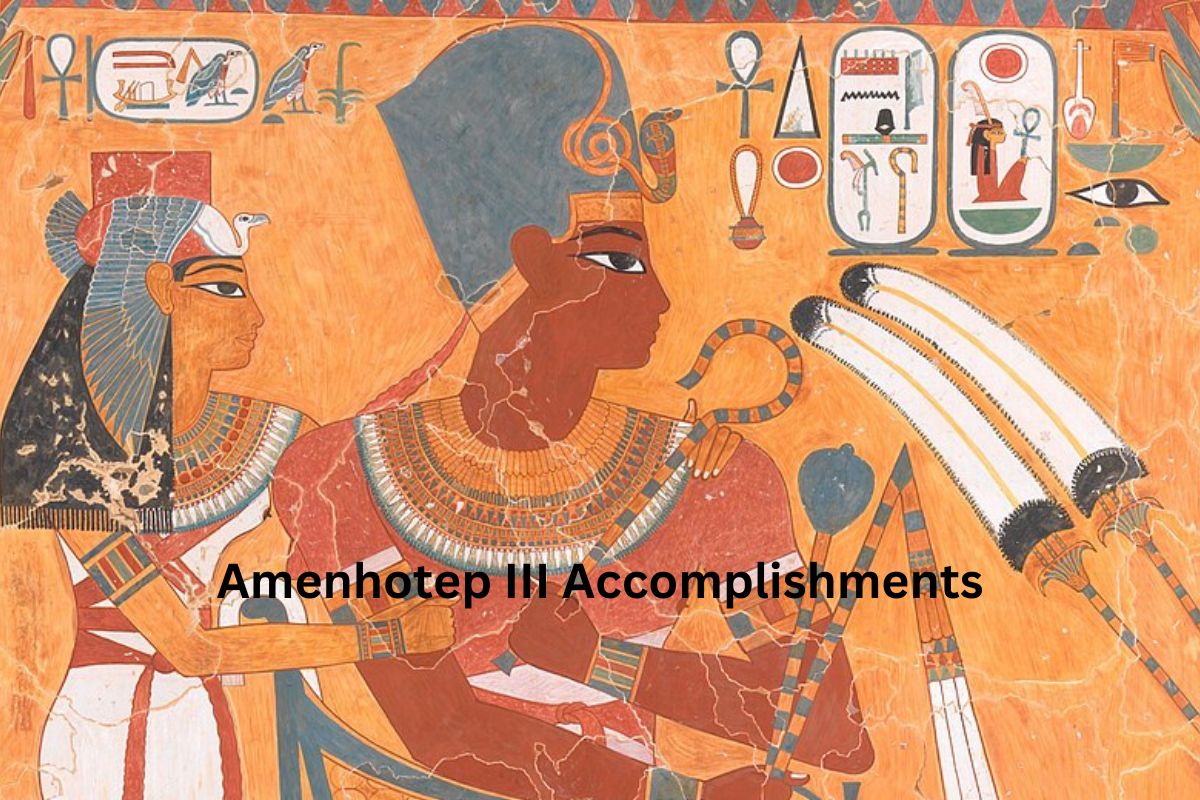Amenhotep III, also known as Amenhotep the Magnificent, was an ancient Egyptian pharaoh who reigned during the 18th dynasty of the New Kingdom period. He ruled from approximately 1386 to 1349 BCE.
Known for his opulence and grandeur, Amenhotep III left a lasting mark on ancient Egypt through his monumental building projects, diplomatic prowess, and patronage of the arts.
Under his reign, Egypt experienced a period of great wealth and prosperity, with extensive trade networks and flourishing cultural achievements.
Amenhotep III’s accomplishments include the construction of impressive temples, such as the Temple of Luxor and the Temple of Karnak, the commissioning of the famous Colossi of Memnon, and the revival of important religious festivals.
His reign is considered a golden age of Egyptian history and a testament to the power and influence of pharaonic rule.
Accomplishments of Amenhotep III
1. Monumental Building Projects
Amenhotep III embarked on an ambitious building program that left a lasting architectural legacy. He constructed numerous temples and structures throughout Egypt, showcasing his power and devotion to the gods.
Also Read: Facts About Amenhotep III
Notable examples include the Temple of Luxor, a magnificent complex dedicated to Amun-Ra, the Temple of Karnak, one of the largest religious structures in the world, and the Temple of Soleb in Nubia, which displayed his influence over conquered territories.
2. The Colossi of Memnon
Amenhotep III commissioned two colossal statues of himself, known as the Colossi of Memnon. These imposing statues, each weighing around 720 tons and standing at a height of over 18 meters, were placed in front of the pharaoh’s mortuary temple on the west bank of the Nile near Thebes. They represented his divine and kingly authority, serving as guardians of his funerary complex.

3. The Temple of Amun-Ra at Soleb
As a testament to his influence in Nubia, Amenhotep III built the Temple of Amun-Ra at Soleb, located in modern-day Sudan. This temple, constructed on a grand scale, was dedicated to the worship of the god Amun-Ra.
It featured imposing pylons, spacious courtyards, and beautifully adorned sanctuaries. The temple complex served as a religious and administrative center, further solidifying Amenhotep III’s control over Nubia and showcasing the wealth and power of his empire.
4. Wealth and Prosperity
Amenhotep III’s reign was characterized by significant wealth and prosperity. Egypt enjoyed a thriving economy, driven by extensive trade networks and a robust agricultural sector.
The pharaoh’s successful diplomatic efforts and peaceful relations with neighboring regions facilitated a flourishing trade of luxury goods, including precious metals, gemstones, spices, exotic woods, and rare animals.
This economic prosperity allowed Amenhotep III to fund his ambitious building projects, patronize the arts, and maintain a lavish court.
5. Diplomacy and International Relations
Amenhotep III skillfully navigated diplomatic relations with other kingdoms and empires during his reign. He formed strategic alliances through diplomatic marriages, cementing peaceful relations and promoting political stability.
He married foreign princesses, including Tadukhepa of Mitanni and Gilukhepa of Amurru, forging alliances with these powerful states. Amenhotep III also maintained friendly relations with Mesopotamia, Hittites, and other neighboring regions, fostering trade partnerships and ensuring the security of Egypt’s borders.

6. Reviving the Festival of the Valley
The Festival of the Valley was an important religious event in ancient Egypt that celebrated the gods Amun, Mut, and Khonsu. It was a time for the pharaoh to reaffirm his divine legitimacy and renew his bond with the gods and the people.
Amenhotep III revived and enhanced this festival, making it a grand spectacle that attracted pilgrims from all over Egypt. The festival involved processions, rituals, offerings, and symbolic ceremonies, reinforcing the pharaoh’s religious authority and the unity of the kingdom under his rule.
7. Artistic Patronage
Amenhotep III was a notable patron of the arts, and his reign witnessed a flourishing of artistic expression in ancient Egypt.
He commissioned and supported the creation of exquisite sculptures, paintings, and decorative arts. Skilled artisans and craftsmen produced magnificent works of art, showcasing their mastery and creativity.
These artworks depicted the pharaoh, the gods, and scenes from everyday life. Amenhotep III’s patronage of the arts not only beautified Egypt but also served as a symbol of his wealth, power, and cultural refinement.
8. The Grand Palace at Malkata
Amenhotep III constructed a grand palace complex at Malkata, located near Thebes. This sprawling residence served as the pharaoh’s primary residence and administrative center.
The palace featured luxurious amenities, including ornate halls, grand reception rooms, beautifully landscaped gardens, and private quarters for the royal family. It was a center of opulence and served as a symbol of the pharaoh’s authority and wealth.
9. Statuary and Portraiture
Amenhotep III commissioned numerous statues and portraits of himself, solidifying his divine image and immortalizing his reign. Sculptors crafted colossal statues of the pharaoh, showcasing him in majestic poses and with idealized features.
These statues were placed in temples, palaces, and public spaces, serving as a visual representation of his power and divinity. Additionally, Amenhotep III encouraged the creation of detailed and lifelike portraits, providing a more personal and realistic depiction of the pharaoh.
10. The Sed Festival
The Sed festival, also known as the Heb Sed or Jubilee festival, was a significant event held to celebrate the pharaoh’s thirty-year reign. Amenhotep III celebrated multiple Sed festivals during his rule, symbolizing the renewal of his power and the reaffirmation of his rule over Egypt.
These festivals involved elaborate rituals, processions, and ceremonies that highlighted the pharaoh’s continued strength and divine favor. The Sed festival was an essential aspect of pharaonic ideology, emphasizing the pharaoh’s eternal rule and his connection to the gods.
